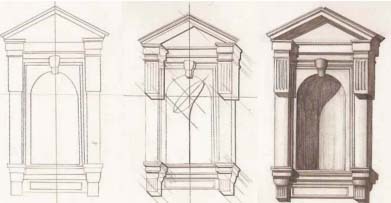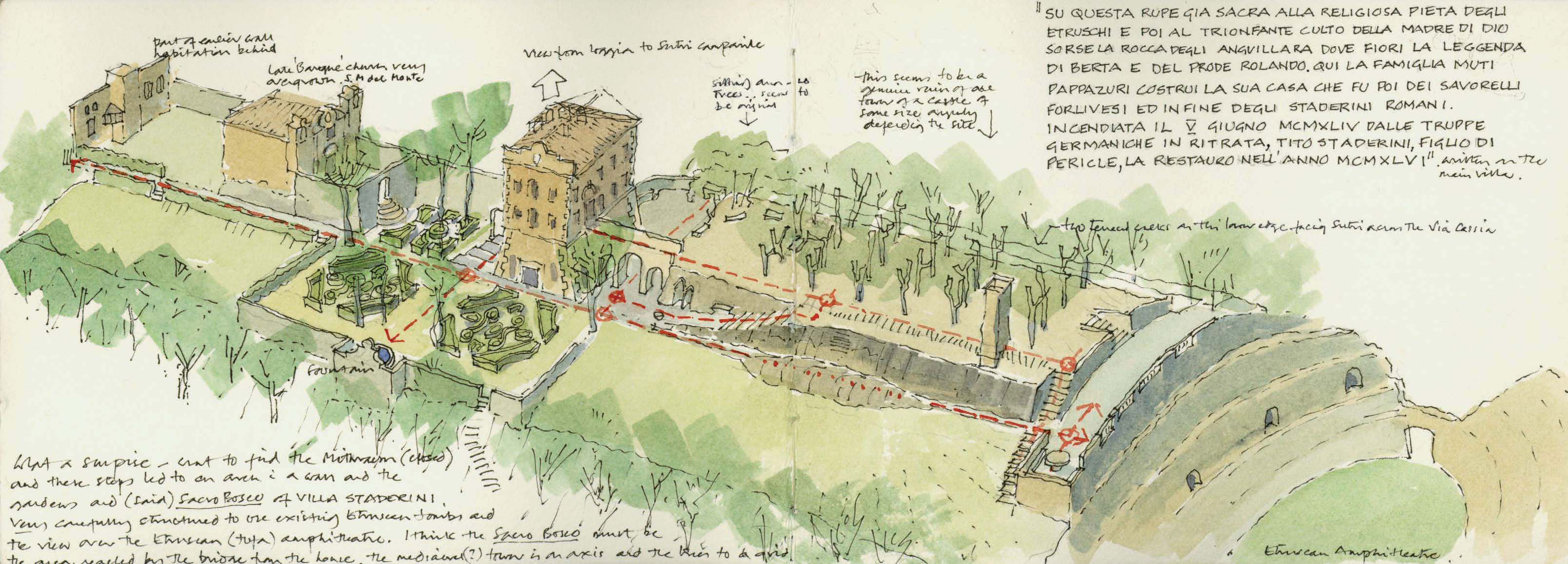This section is about an architect’s sketches and their uses. Sketches fall broadly into two categories. First are those that simply register the world around us, drawings that are a personal record of visual experience. These drawings may be more or less realistic. Second are sketches that come entirely from the imagination. These drawings are about finding ideas as much as expressing them. They can vary from an irrational doodle to a swift cluster of lines that synthesize a whole project or concept; a drawing that captures the whole sense of a proposal.
Both kinds of sketches are important and while sketching is not an innate ability for all architects, the commitment to visual expression in this way remains a vital skill. The observational sketch is distinct from an illustration: a good observational sketch need not necessarily be illustrative, rather it could be about selection and analysis as much as it is an accurate visual record, complementing photographic analysis in its abstraction from detail. The emphasis of observational sketches is on thinking about the things we see, about spatial and structural organization, scale, light, color, and material. In this sense innate drawing ability is less important than an engaged and focused approach to “thinking-through-drawing.”
Both kinds of sketches are distinct from, but are often confused with, diagrams. One of the most often referred-to diagrams is the “concept sketch” that appears at the start of the design process. Like a diagram, this kind of drawing can be reductive in a negative way. The concept sketch is actually a modern invention that derives from the term concetto used in Renaissance architecture. But in contrast to the rich combinations of text and image that these ideas once referred to, today’s concept sketch tends to be visually diagrammatic and simplistic in content: rather than bringing ideas and images together in a synthetic way (as in the original concetto) the “concept sketch” tends to pull them apart.
In that sense two common drawing types, the concept sketch and the diagram, are not central to the approach taken in this section. Here we are more focused on the creative potential for architectural drawing and sketches in particular, at the start of the design process, when quick drawings can represent ideas and drive forward the holistic understanding of an architectural proposal. The sketchbook is traditionally the diary of an architect’s ideas and still retains a value. Here, illustrations from sketchbooks of the artist Mario Ricci and the architect Peter Sparks illustrate a narrative of ideas, using pencil, ink, and watercolor wash. The sketchbook becomes a domain of thoughts, some of which will develop into further drawings and models.
TIP SCIAGRAPHY
Simple projection can form shadows that reveal form. Keep the light source coming from one direction and project through 45 or 60 degrees.


Architect Peter Sparks’ highly skillful watercolor sketch isometric of Villa Staderini, Italy, illustrates how effectively such a drawing can be used to analyze a complex topography.
